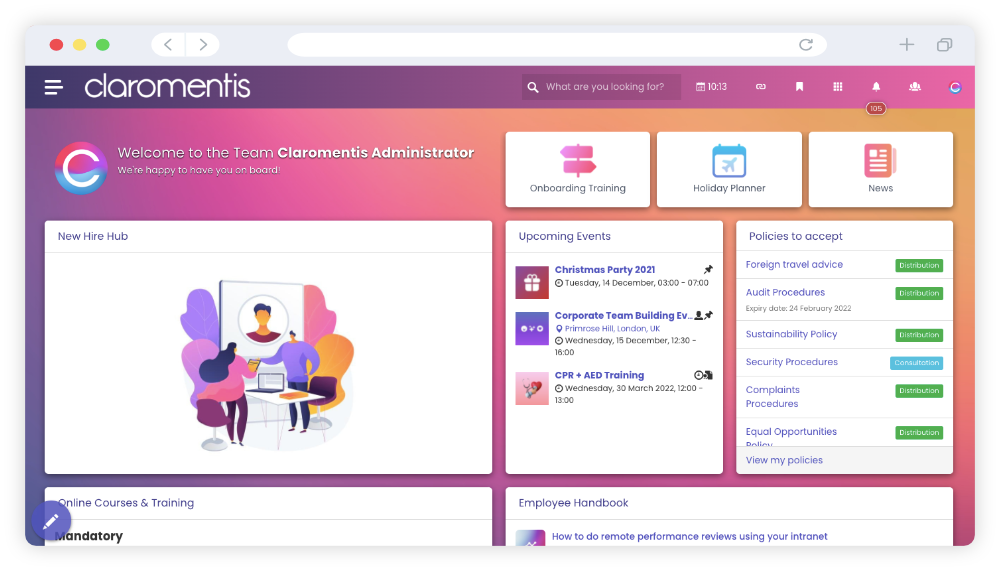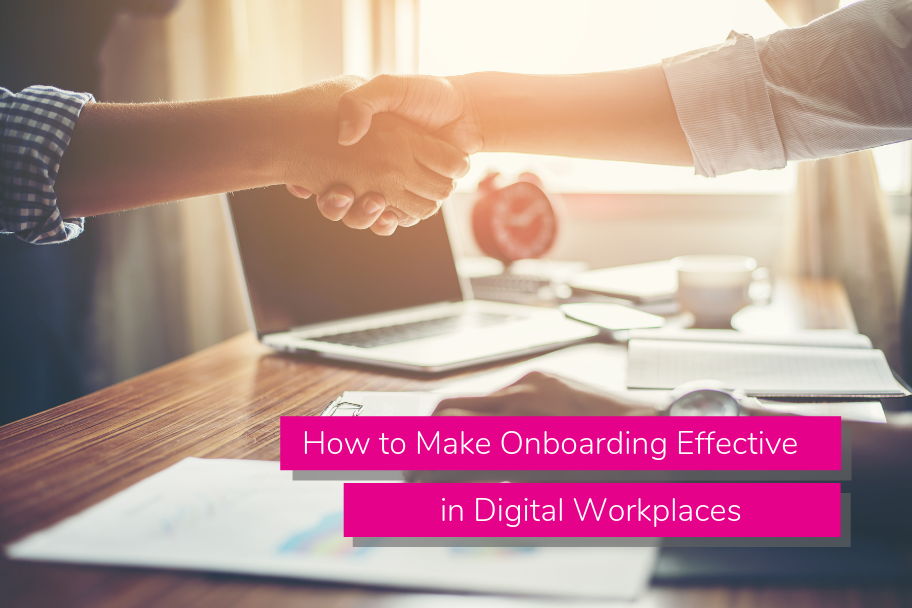Getting a new team member fully operational and “clued up” quickly is a commercial imperative, and a central plank of a positive business culture. Particularly if your sector suffers from staff churn, and new recruits are joining your ranks regularly.
Having an induction that drags on too long can be disruptive for business operations, be a distraction for the appointed mentor or line manager, and even be boring for your new employee.
On the other hand, not investing enough time or effort onboarding new staff can be even more divisive, and lead to insidious long term problems.
This includes new staff who feel marginalised, overlooked, and inadequately recognised from day one, and therefore immune to all other company culture aims.
It can also lead to an underperforming team player, who lacks the insights and abilities to get up to speed with colleagues and systems. Worse still, you could be leaving the way open for costly mistakes and oversights.
If leaving too much room for error means poor data control, an ill-informed or under-supported “newbie” could derail all your carefully planned data management systems.
Do digital workplaces make onboarding easier?
Back in the “old days” an employee onboarding typically involved enough paperwork and office system manuals to kill a small forest. The first few days in a new job could be spent walking-the-walk around the building, and sitting in seemingly endless meet-and-greets with senior management.
Products were piled up on desks to give new staff a chance to get familiar with them, as part of their learning curve, and could be seen scurrying home wide-eyed with bewilderment.
The advent of modern intranets has automated and streamlined many onboarding tasks. When properly set up, it can ensure new team members can systematically work through induction programmes at their own pace, taking in the detail more effectively.
This includes having access to a wealth of data and images, to explore products and services in-depth, and at will. At any point in the day, new staff should be able to click on searchable tabs to find the answers they need, about the products, services, and business processes that will eventually become second nature to them.

Use your intranet to induct new staff. A “welcome to the company” page can help make them feel more at home!
More pros and cons of online onboarding
Having so much of the information for new employees online gives fledglings and their superiors an intuitive and responsive support system.
HR and line managers can chart progress more accurately and can analyse online training courses to see where errors or uncertainty may be lurking.
However, this can lead to an unfortunate reliance on technology to fulfil all the requirements of onboarding. Put simply, this exacerbates the view that digital workplaces have become too “cold” and robotic.
Intranet induction materials and activities can’t be seen as an entire onboarding solution and a way to completely dispense with human interaction in the first few weeks of employment.
Online support should add to a culture of positive interaction for new staff.
Even the most devoted and passionate “techie” needs opportunities to build relationships with colleagues and line managers, not just with their company devices and software!
Talking of devices, it would be easy to think that Millennials or Generation Z recruits are capable of hitting the ground running with any communications, data sharing, and collaboration tools you throw at them. After all, it’s only senior staff who need support, as they are not tech-savvy, right?
Wrong. And this sweeping assumption is not helpful, particularly if you are relying on your new staff member’s ability to understand your equipment and software to get to grips with their daily tasks and aims.
All new recruits should receive one-to-one training on your intranet software and chosen devices; it’s time well invested.

Millennials and Gen-Z recruits automatically know how to use all technology and don’t need training, right? Well… 👀
Humanising onboarding culture
This process of helping new staff to settle and get fully comfortable with your brand, team, and systems includes offering them ample chance to chat informally and raise less structured questions and concerns.
Open, free-flowing discussions may be where the misconceptions or myths can be addressed.
Not least, as even the most advanced technology can’t always fill knowledge and awareness gaps when the individual user is unaware that these gaps exist.
Using intranet software to socialise new staff
Some of the personalisation and human interaction that makes onboarding smooth and inclusive can be enhanced by the best intranet software set-up.
For example, having a corporate social network built-in can be highly fertile ground for easing new employees into their role. It’s the modern equivalent of the staff canteen or coffee machine, where new staff can chat to colleagues and get a “feel” for their new place of work.
Shyer newbies, or new recruits who are most comfortable with technology and social media, may find the option of chatting online the easiest way to address their initial employment needs.

![[FREE GUIDE] HOW TO CREATE AN ONLINE COMPANY CULTURE](https://no-cache.hubspot.com/cta/default/5025095/404e6163-5acd-40fd-9d11-858bdb05ea69.png)




